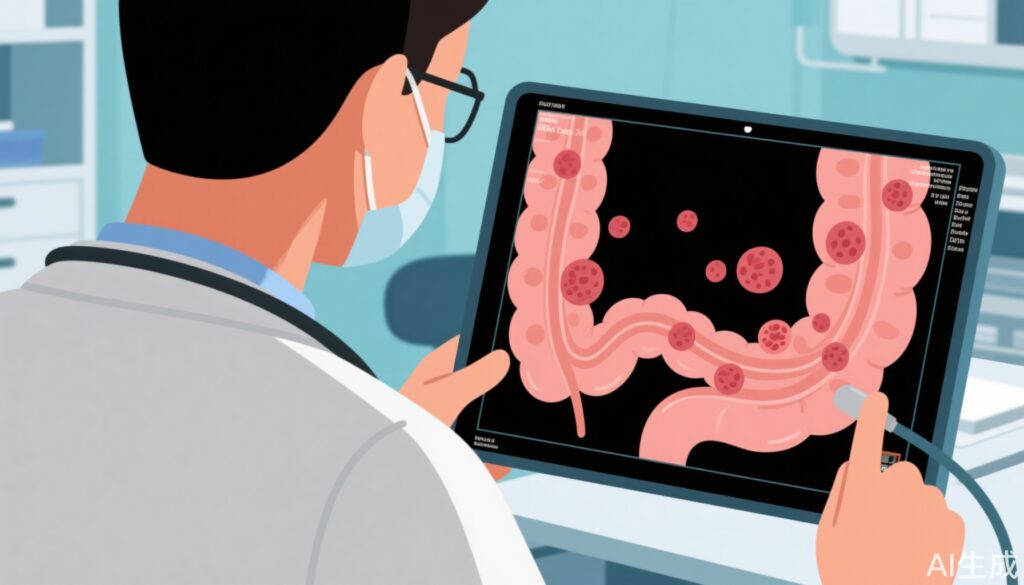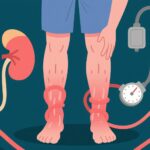Understanding Intestinal Polyps and Their Cancer Risk
Intestinal polyps are localized overgrowths or thickening of the mucosal lining of the colon or rectum, appearing as raised lesions. While the exact cause of intestinal polyps remains unclear, they predominantly occur in middle-aged and elderly individuals, with incidence rates rising to 25-80% after age 50.
Although most polyps are benign, extensive research has identified them as important precancerous lesions. Approximately 80-95% of colorectal cancers are associated with intestinal polyps.
The progression typically follows this sequence: normal mucosa → hyperplasia → adenoma formation or malignant transformation → carcinoma in situ → invasive cancer and metastasis. Adenomatous polyps can take about 30 years to evolve into precancerous lesions, with cancer developing within 5 to 10 years thereafter if untreated.
Types of Polyps That Demand Immediate Attention
While many polyps pose a low cancer risk, two types stand out for their high malignancy potential and require prompt removal:
1. Adenomatous Polyps
These are among the most common intestinal polyps, often smooth or covered with fine villi. They have a significantly elevated risk of malignant transformation, especially those larger than 2 cm in diameter, where the risk increases further.
2. Familial Adenomatous Polyposis (FAP)
FAP is a hereditary condition characterized by the development of thousands of polyps throughout the colon. Without treatment, the risk of cancer approaches nearly 100%. Symptoms often appear during adolescence, underscoring the importance of early intervention.
Generally, polyps measuring 5 mm or larger should be removed promptly. Smaller, non-adenomatous polyps (≤5 mm) have a lower likelihood of progressing to cancer and may not require immediate treatment. However, any polyp exhibiting features such as depression, flat shape, or villous components should be removed regardless of size.
Four Possible Symptoms Indicating Intestinal Polyps
Most patients with intestinal polyps are asymptomatic, but certain signs during bowel movements can signal their presence. If experienced, timely medical consultation is essential:
1. Polyp Prolapse
Pedunculated polyps in the lower rectum may protrude through the anus during defecation, appearing as bright red, round, or cherry-like masses. These may retract after bowel movement. Sessile polyps without stalks are usually only detected during medical examination.
2. Rectal Bleeding
Friction between polyps and stool can cause bleeding, which may manifest as dark red blood visible to the naked eye or as microscopic blood detectable only through laboratory analysis.
3. Changes in Bowel Habits or Stool Shape
Sudden constipation, diarrhea, or alternating bowel patterns in previously regular individuals can be warning signs. Changes in stool shape, such as narrowing or grooves on the surface, may result from polyps compressing the bowel lumen.
4. Abdominal Pain and Bloating
Large polyps can obstruct the intestinal tract, leading to discomfort, noticeable bloating, and abdominal pain due to impaired stool passage.
Preventing the Progression from Polyps to Colorectal Cancer
The development of colorectal cancer from polyps is a prolonged process, providing a window for prevention through two critical steps:
1. Colonoscopy Screening
Colonoscopy is the gold standard for detecting colorectal cancer and precancerous lesions. It is recommended that individuals aged 45 and above undergo screening, with those having a family history of colorectal cancer starting approximately 10 years earlier.
During colonoscopy, detected polyps can be removed and biopsied to assess malignancy risk. After polyp detection, follow-up screenings are generally advised every three years.
2. Dietary Modifications
Diet plays a significant role in intestinal health and cancer risk. To maintain a healthy colon, it is advisable to limit intake of:
– Red and Processed Meats: These contain nitrates, heme iron, and heterocyclic amines formed during high-temperature cooking, which can irritate the colon and increase cancer risk.
– High-Fat Diets: Excessive fat intake can lead to obesity, a known risk factor for various cancers including colorectal cancer.
– Spicy and Irritating Foods: These may cause mucosal irritation in the gut and stomach, potentially increasing disease risk with chronic consumption.
Conclusion
Although most intestinal polyps are benign, vigilance is crucial. Early detection and removal significantly reduce the risk of malignant transformation. Maintaining healthy lifestyle habits and regular medical check-ups enable timely intervention and help prevent colorectal cancer. If any symptoms suggestive of polyps occur, prompt consultation with a healthcare professional is essential.



